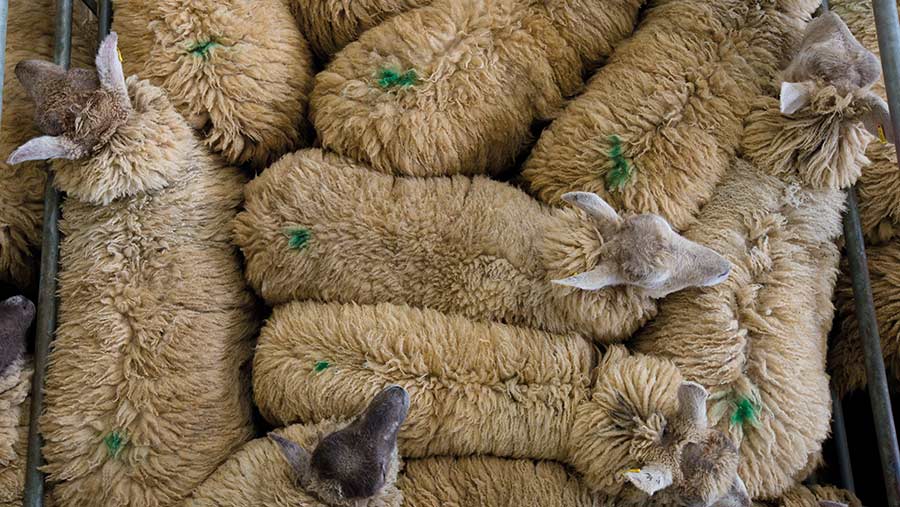‘Long-term decline’ resurfaces to stymie hogg trade
 © Tim Scrivener
© Tim Scrivener Hogg prices have been handicapped by long-term trends and have failed to justify store buyers paying through the nose, despite the first “proper Easter” since 2019.
The trade predicted that, because Ramadan spanned the whole of April and Easter also fell in the middle of the month, prices would lift as families feasted.
This has happened to an extent, but the old season lamb SQQ has only topped at 277p/kg and has continued to lag 20-40p/kg behind last year’s prices since early February. This has forced deadweight values to lift from 550p/kg to nearer 600p/kg.
See also: Store prices set fair with lamb kill back 16%
AHDB analysts suggest another post-Covid trend might be at play. This involves:
- Covid hesitancy: Eating out has made a return in the UK but not to levels required to service the number of heavy hoggs being offloaded on to the market
- Economic pressure: The last recession in 2008 saw shoppers turn to cheaper cuts and lamb lose menu share
- Long-term decline: Shoppers query lamb price, convenience, fattiness and its impact on the environment. The result is a gradual and ongoing drop in lamb consumption through retail channels. With headlines less Covid-dominated this year, will the sustainability of red meat continue to make headlines?
- Limited mincing demand: Prime lambs, unlike cattle, are not minced and processed cheaply. (This is part of the reason for strong cull cow and young bull sales, according to trade.)
Eating and heating
Lamb is worryingly close to becoming a luxury, said auctioneer Chris Armstrong of Hexham and Northern Marts. This is due to limited demand for minced products compared with beef.
A local café was charging 20% more for a roast lamb dinner than beef, purely because of the cost of lamb, he explained.
He said heating and eating would have to be prioritised over “holidays and hot tubs” if farmgate prices were to rise to profitable levels, given rampant cost inflation.
He said some producers were calling for £200 averages for prime lambs, and for prime cattle at £2,500, to ensure profitability as subsidies fell. He questioned whether the market could achieve or cope with trade at that level.
“A greater carryover of lambs from 2021 into 2022 resulted in tight supplies of lambs, and good Texel and Beltex three-quarter-bred wethers making £150-£160 a head in the October and November store rings,” said Mr Armstrong.
“We had 5,000 stores a week back then and the prime lambs made £120-£130. Sadly, the price hasn’t lifted as hoped,” he said, adding that many store lambs sold this spring had made a loss.
The numbers
-3.5p/kg
Drop in Monday’s liveweight lamb SQQ on the week. Lambs over 52kg levelled at 223p/kg, while 39.1-45.5kg lambs averaged 276.4p/kg
-20%
Decrease in UK spend on lamb on the year for the 12 weeks ending 20 March
45,000
Increase in kilos of lamb burgers and grills which have sold this spring on the year – the only cut reporting growth
(Source: AHDB)
